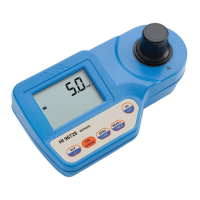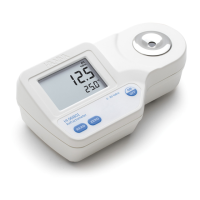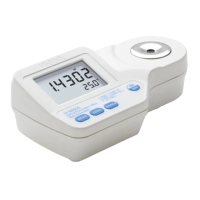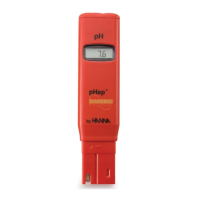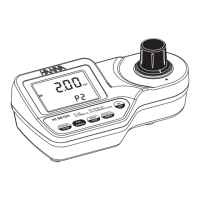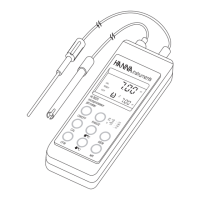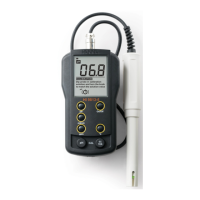13
• Each time the cuvet is used, the cap must be tightened to
the same degree.
• Whenever the cuvet is placed into the measurement cell,
it must be dry outside, and completely free of fingerprints,
oil or dirt. Wipe it thoroughly with HI 731318 or a lint-
free cloth prior to insertion.
• Proper use of the powder reagent packet:
(a) use scissors to open the powder packet;
(b) push the edges of the packet to form a spout;
(c) pour out the content of the packet.
• Shaking the cuvet can generate bubbles in the sample, causing higher readings. To obtain
accurate measurements, remove such bubbles by swirling or by gently tapping the cuvet.
• Do not let the reacted sample stand too long after reagent is added, or accuracy will be lost.
• It is possible to take multiple readings in a row, but it is recommended to take a new zero
reading for each sample and to use the same cuvet for zeroing and measurement.
• After the reading it is important to discard immediately the sample, otherwise the glass
might become permanently stained.
• All the reaction times reported in this manual are referred to 20°C (68°F). As a general rule
of thumb, they should be doubled at 10°C (50°F) and halved at 30°C (86°F).
• In order to maximize accuracy, prior to a measurement follow the validation procedure to
be sure that the instrument is properly calibrated. If necessary, calibrate the instrument.
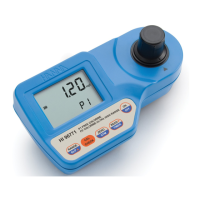
